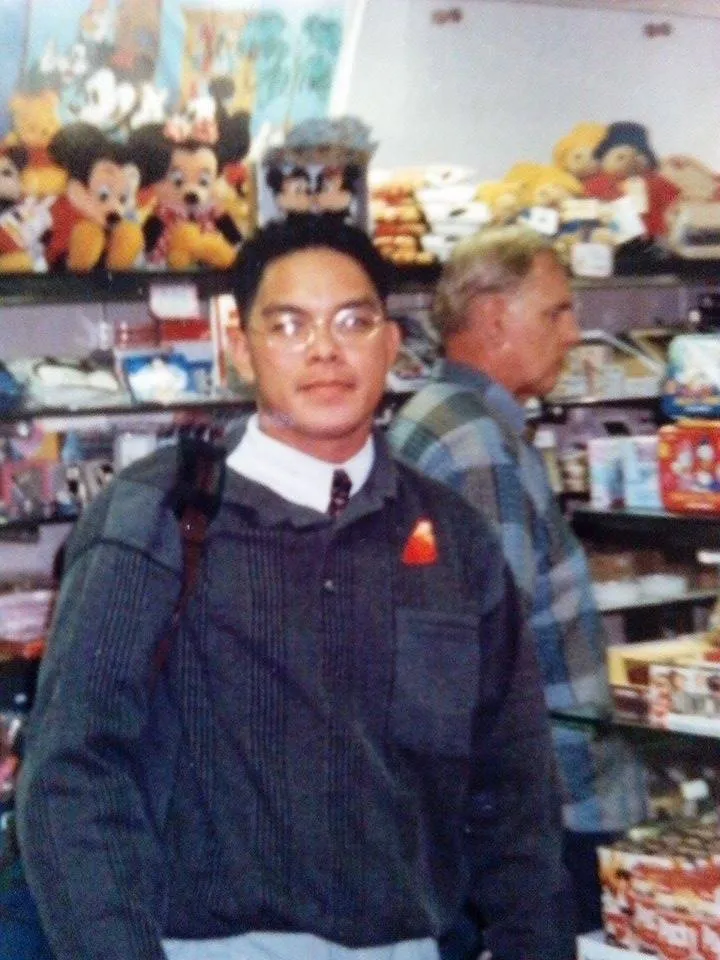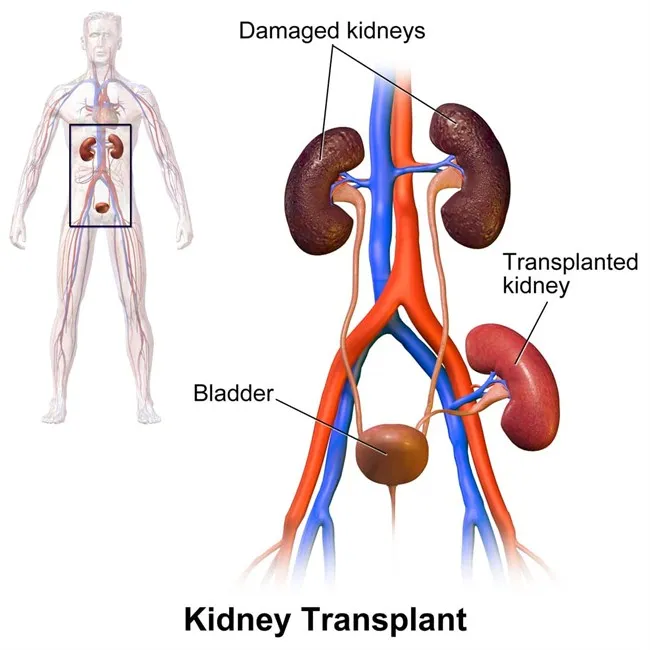Five months after I gave birth to my son CJ (my disabled son), my brother Ric asked me if I can be his possible kidney donor. I said why not if our blood type and tissues match. His doctor scheduled us for a series of tests and VOILA! we were 99% matched! So after the tests we were then scheduled for a KIDNEY TRANSPLANT. It was successful but God had other plans for him. After six (6) months of recovery, he had pulmonary infection and that caused his death. It was so painful for the family but then life has to go on . I MISS YOU SO MUCH BROTHER DEAREST , I know you are now happy with our Creator. So long.. SEE YOU AROUND MY DEAR. I LOVE YOU SO MUCH.

Living Donor Kidney Transplant*
As kidneys become diseased, they lose their ability to function, a condition called end-stage renal disease (ESRD) or kidney failure. Treatments for kidney failure are hemodialysis, a mechanical process to clean the blood of waste products; peritoneal dialysis, in which toxins are removed by passing chemical solutions through the abdomen; or kidney transplant.

(photo from UCSF)
Living Donors
Kidneys for transplant come from a living donor or a deceased (cadaver) donor. When a kidney is transplanted from a living donor, the donor's remaining kidney enlarges to take over the work of two. As with any major operation, there is a chance of complication. But kidney donors have the same life expectancy, general health and kidney function as others.
Any healthy person can safely donate a kidney. The donor must be in excellent health, well informed about transplantation and able to give informed consent. Costs for living donor surgery, hospitalization, diagnostic tests and evaluation usually are paid by the recipient's insurance. Travel and living expenses are not covered. Insurance coverage will be discussed during the transplant evaluation.
If you have a potential living donor, he or she will undergo an evaluation and discuss the possibility of organ donation. Tests will be performed to ensure that the donor and recipient are compatible. In some families, several people are compatible donors. In other families, none are suitable.
Since 1999, UCSF has been using a procedure, called laparoscopic donor nephrectomy, to remove kidneys from living donors. We have performed more than 850 of these procedures, making our program one of the most experienced in the country. The procedure uses tiny incisions and a scope or camera, similar to one used to remove a gall bladder. The procedure has a shorter recovery period and the complication rate is very low. In addition, the quality and function of the transplanted kidneys are excellent.
The procedure will be described in detail by the surgeon prior to surgery. The operation usually takes three hours. Most patients undergoing laparoscopic surgery for kidney donation require a hospital stay of only two to three days. After discharge from the hospital, the donor is seen for follow-up care in the transplant clinic. If the donor resides outside the San Francisco region, he or she should stay in the area for at least a week after discharge. Donors who undergo laparoscopic surgery often return to work within three to four weeks after the procedure.
Living Donor Kidney Transplantation
Living donor kidney transplants are the best option for many patients for several reasons:
Better long-term results
No need to wait on the transplant waiting list for a kidney from a deceased donor
Surgery can be planned at a time convenient for both the donor and recipient
Lower risks of complications or rejection, and better early function of the transplanted kidney
Any healthy person can donate a kidney. When a living person donates a kidney the remaining kidney will enlarge slightly as it takes over the work of two kidneys. Donors do not need medication or special diets once they recover from surgery. As with any major operation, there is a chance of complications, but kidney donors have the same life expectancy, general health, and kidney function as most other people. The kidney loss does not interfere with a woman's ability to have children.
-Potential Barriers to Living Donation
-Age < 18 years unless an emancipated minor
-Uncontrollable hypertension
-History of pulmonary embolism or recurrent thrombosis
-Bleeding disorders
-Uncontrollable psychiatric illness
-Morbid obesity
-Uncontrollable cardiovascular disease
-Conronic lung disease with impairment of oxygenation or ventilation
-History of melanoma
-History of metastatic cancer
-Bilateral or recurrent nephrolithiasis (kidney stones)
-Chronic Kidney Disease (CKD) stage 3 or less
-Proteinuria > 300 mg/d excluding postural proteinuria
-HIV infection
If a person successfully completes a full medical, surgical, and psychosocial evaluation they will undergo the removal of one kidney. Most transplant centers in the United States use a laparoscopic surgical technique for the kidney removal. This form of surgery, performed under general anesthesia, uses very small incisions, a thin scope with a camera to view inside of the body, and wand-like instruments to remove the kidney. Compared with the large incision operation used in the past, laparoscopic surgery has greatly improved the donor's recovery process in several ways:
-Decreased need for strong pain medications
-Shorter recovery time in the hospital
-Quicker return to normal activities
-Very low complication rate
-The operation takes 2-3 hours. Recovery time in the hospital is typically 1-3 days. Donors often are able to return to work as
soon as 2-3 weeks after the procedure.
Occasionally the kidney needs to be removed through an open incision in the flank region. Prior to the use of the laparoscopic technique, this surgery was the standard for the removal of the donated kidney. It involves a 5-7 inch incision on the side, division of muscle and removal of the tip of the twelfth rib. The operation typically lasts 3 hours and the recovery in the hospital averages 4-5 days with time out of work of 6-8 weeks.
Although laparoscopy is increasingly used over open surgery, from time to time, the surgeon may elect to do an open procedure when individual anatomic differences in the donor suggest that this will be a better surgical approach.
The quality and function of the kidneys recovered with either technique work equally well. Regardless of technique all donors will require lifelong monitoring of their overall health, blood pressure and kidney function.
*(SOURCE: University of California San Francisco)
The reason I write this topic is to help those who wanted to donate their kidney to their love ones but hesitate to do so because they are not fully informed, aware and are scared. I donated my right kidney to my youngest brother on February 7, 2000...17 years now and I am grateful that I did! Am healthy, strong and alive! I eat healthy foods such as poultry products, seafoods, fresh vegetables and fruits. Just eat in moderation and have your Nephrologist check your kidney every year. Monitor your creatinine every six months, your urine every month or better still have a blood chemistry annually. I hope this is an eye opener for those whose love one needs your help to extend their precious life on earth.
![venus kidney incision.jpg]
( )
)
A photo of my kidney incision.. you can't even see the scar